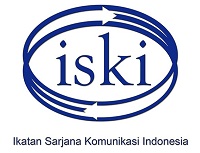Shielding Communication Privacy: Unveiling The Strategic Utilization Of Instagram’s Second Account Feature By Millennial Generation
DOI:
https://doi.org/10.29313/mediator.v16i1.2171Keywords:
privasi, instagram, second account, milenialAbstract
Privacy management amid the development of social media seems to be in a dilemma. On the one hand, social media provides space for expression and self-expression, including all information that comes in a personal context. But on the otherhand this has the potential to violate privacy. Uniquely, the second account feature is often considered a safe zone to express oneself more openly. It is in such situations that management privacy is required. In the theory of communication privacy management (CPM) by Sandra Petronio, a person’s boundaries in behavior must be determined by himself. This research uses a qualitative approach with a case study method. Data collection techniques by interviewing and documenting several uploads on the nformant’s second account. The results of this study indicate that the various violations that occurred on the second account were caused by a lack of knowledge to a wrong understanding that the data would be stored safely with the closest trusted person. Even though the person who is selected to enter the second account circle is also vulnerable to opening the data privacy of the account owner and even spreading it. After this research is expected to be input for social media users to be wiser in managing their privacy even in features that are considered safe.
References
Agung, L., & Nugraha, N. D. (2019). Digital Culture and Instagram: Aesthetics for All? Universitas Multimedia Nusantara. https://doi.org/Digital Culture and Instagram: Aesthetics for All?
Agung, P., & Arofah, K. (2012). Media sosial instagram sebagai sarana sosialisasi kebijakan penyiaran digital. Jurnal Komunikasi, 2, 256–269.
Akram, W. dan R. K. (2017). A Study on Positive and Negative Effects of Social Media on Society. International Journal of Computer Sciences and Engineering., 5.
Andriyani, J. (2019). Strategi Coping Stres Dalam Mengatasi Problema Psikologis. At-Taujih : Bimbingan Dan Konseling Islam, 2(2), 37. https:// doi.org/10.22373/taujih.v2i2.6527
Anwar, M. J., Gill, A. Q., & Beydoun, G. (2018). A review of information privacy laws and standards for secure digital ecosystems.
Arslan, N., & Kiper, A. (2018a). Self- Disclosure and Internet Addiction. In Malaysian Online Journal of Educational Technology (Vol. 6, Issue 1). www.mojet.net
Asosiasi Penyelenggara Jasa Internet Indonesia. (2023). Info Grafis Penetrasi dan Perilaku Pengguna Internet di Indonesia.
Azizatun Nabillah, N., & Hanurawan, F. (2022). Association Between Self-esteem and Self-disclosure in Female University Students as Second Instagram Account Users in Malang. KnE Social Sciences. https://doi. org/https://doi.org/10.18502/kss. v7i18.12393
Badan Pusat Statistik. (2018). Statistik Gender Tematik: Profil Generasi Milenial Indonesia. Kementerian Pemberdayaan Perempuan dan Perlindungan Anak dan Badan Pusat Statistik.
Balleys, C., & Coll, S. (2017). Being publicly intimate: teenagers managing online privacy. Media, Culture and Society. 39(6), 885–901.
Bean, H. (2017). Privacy and Secrecy. In The International Encyclopedia of Organizational Communication (pp. 1–14). Wiley. https://doi. o r g / 1 0 . 1 0 0 2 / 9 7 8 1 1 1 8 9 5 5 5 6 7 . wbieoc170
Botero Arcila, B., & Griffin, R. (2023). Social media platforms and challenges for democracy, rule of law and fundamental rights Policy Department for Citizens’ Rights and Constitutional Affairs Directorate-General for Internal Policies PE 743.400-April 2023 En Study.
Cahyaning, A., & Cahyono, T. R. (2015). Perbedaan Communication Privacy Management di Media Sosial Twitter pada Remaja dengan Tipe Kepribadian Extravert dan Introvert. Jurnal Psikologi Pendidikan Dan Perkembangan, 4(1).
Danezis, G., Domingo-Ferrer, J., Hansen, M., Hoepman, J.-H., Metayer, D. Le, Tirtea, R., & Schiffner, S. (2015). Privacy and Data Protection by Design - from policy to engineering. https:// doi.org/10.2824/38623
Denzin & Lincoln. (2009). Handbook of Qualitative Research. Pustaka Pelajar.
Fardiah, D., Rinawati, R., Darmawan, F., Abdul, R., & Lucky, K. (2020). Media Literacy For Dissemination Anticipated Fake News On Social Media. Mediator: Jurnal Komunikasi, 13(2), 278–289. https://doi.org/10.29313/mediator. v13i2.6624
Gruzd, A., & Hernández-García, Á. (2018). Privacy Concerns and Self-Disclosure in Private and Public Uses of Social Media. Cyberpsychology, Behavior, and Social Networking, 21(7), 418–428. https://doi.org/10.1089/ cyber.2017.0709
Hawi, N. S., & Samaha, M. (2017). The Relations Among Social Media Addiction, Self-Esteem, and Life Satisfaction in University Students. Social Science Computer Review, 35(5). https://doi.org/576–586. https:// doi.org/10.1177/0894439316660340
Hermawati, T., Setyaningsih, R., & Nugraha, R. P. (2021). Teen Motivation to Create Fake Identity Account on Instagram Social Media. International Journal of Multicultural and Multireligious Understanding, 8(4). https://doi. org/https://doi.org/10.18415/ijmmu. v8i4.2459
Kaifi, B. A., Nafei, W. A., Khanfar, N. M., & Kaifi, M. M. (2012). A multi-generational workforce: managing and understanding millennials. International Journal of Business & Management, 7(24), 88–93.
Kaplan, A. and M. H. (2010). Users of the world unite! The Challenges and opportunities of social media. Business Horizons, 53(1), 59–68.
Kennedy-Lightsey, C. D., Martin, M. M., Thompson, M., Himes, K. L., & Clingerman, B. Z. (2012). Communication Privacy Management Theory: Exploring Coordination and Ownership Between Friends. Communication Quarterly, 60(5), 665– 680. https://doi.org/10.1080/01463373 .2012.725004
Krishna, A. (2020). Privacy is a Concern: An Introduction to the Dialogue on Privacy. Journal of Consumer Psychology, 30(4), 733–735. https:// doi.org/10.1002/jcpy.1186
Koidl, K., Conlan, O., Reijers, W., Farrell, M., & Hoover, M. (2018). The bigfoot initiative: An investigation of digital footprint awareness in social media. ACM International Conference Proceeding Series, 120–127. https:// doi.org/10.1145/3217804.3217904
Littlejohn, S. W. (2017). Theories of Human Communication 11th Editon. USA: Waveland Press.
Miles, M. B., Huberman, A. M., & Saldana, J. (2013). Qualitative data analysis: A methods sourcebook. London: Sage Publications.
Paramesti, A. R., & Nurdiarti, R. P. (2022). Penggunaan Pseudonym di Second Account Instagram dalam Perspektif Etika Digital. Jurnal Communio: Jurnal Ilmu Komunikasi, 11(1).
Patton, M. Q. (2002). Nontraditional Regulations, and Innovations in Darning-Centered, Doctoral Education, Including Faculty Meetings That Are Interesting and Important, an Indication of Knovation of the Highest Order In Qualitative Inquir.
Pelteret, M., & Ophoff, J. (2016). A Review of Information Privacy and Its Importance to Consumers and Organizations. In Informing Science: the International Journal of an Emerging Transdiscipline (Vol.19). http://www.informingscience.org/ Publications/3573
Pramesthi, J. A., & Wulandari, E. (2020). Communication Privacy Management: Studi Literatur Pada Batasan Privasi Dalam Konteks Keluarga Indonesia. Jurnal Ranah Komunikasi (JRK), 4(2). https://doi.org/https://doi. org/10.25077/rk.4.2.122-132.2020
Pramesti, O. L. (2023). Penerapan Etika Digital di Kalangan Content Creator TikTok. Mediator: Jurnal Komunikasi, 15(2), 236–248. https://doi. org/10.29313/mediator.v15i2.10460
Purmiasa, S. E., Yoanita, D., & Budiana, D. (2020). Factors of Public Self- Disclosure Via Instagram Stories.
Ramirez, F. A., & Lane, J. (2019). Communication Privacy Management and Digital Evidence in an Intimate Partner Violence Case. International Journal of Communication, 13.
Roessler, B., & Mokrosinska, D. (2013). Privacy and social interaction.
Philosophy and Social Critism, 39(8), 771–791.
Saidah, M. (2019). Kebebasan berekspresi dan paradoks privasi dalam hubungan pertemanan. 3(2).
Sakinah, S. (2021). Analysis of the Use of Close Friend Feature on Instagram as a Social Networking Site Using Communication Privacy Management Theory. Jurnal Pewarta Indonesia, 3(2), 95–104. https://doi.org/https:// doi.org/10.25008/jpi.v3i2.85
Sarikakis, K., & Winter, L. (2017). Social Media Users’ Legal Consciousness About Privacy. 3(1). https://doi.org/). https:// doi.org/10.1177/2056305117695325
Singh, D. (2019). Ethical Dilemmas on Data Privacy and Security for Social Media’s Users. SSRN Electronic Journal. https://doi.org/https://doi. org/10.2139/ssrn.3395616
Sirait, A. R. (n.d.). Spectactorial Sisterhood: Relasi Sosial Pengguna Second Account di Instagram (Vol. 42, Issue 1). https://instagram-press.com/.
Sirait, A. R. (2021). Spectactorial Sisterhood: Relasi Sosial Pengguna Second Account di Instagram. 42.
Siregar, A. H. (2022). Privacy Anxiety on Micro-Influencers in Self-Disclosure through the Add Yours on Instagram Social Media. Budapest International Research and Critics Institute-Journal (BIRCI-Journal), 5(3).
Steuber, K. R., & McLaren, R. M. (2015). Privacy Recalibration in Personal Relationships: Rule Usage Before and After an Incident of Privacy Turbulence. Communication Quarterly, 63(3), 345–364. https://doi. org/10.1080/01463373.2015.1039717
Trepte and Reinecke. (2011). In Privacy Online. Springer Berlin Heidelberg. https://doi.org/10.1007/978-3-642- 21521-6
Wahyu Natalia, I. (n.d.). Communication Privacy Management (Manajemen Komunikasi Privasi) tentang Hubungan Seks Pranikah yang telah dilakukan oleh Remaja. www.kaskus. co.id
Yin, R. K. (2017). Case Study Research and Applications. https://doi. org/http://ir.obihiro.ac.jp/dspace/ handle/10322/3933
Downloads
Published
Issue
Section
License
Copyright (c) 2023 Author

This work is licensed under a Creative Commons Attribution-ShareAlike 4.0 International License.























